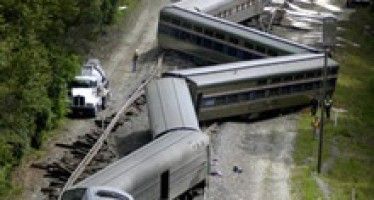San Francisco approves ‘coercive’ green energy plan
By Dave Roberts
Thousands of San Francisco residents may be sucked into a green energy plan that will raise their electricity rates 77 percent without their knowledge or consent. Beginning next spring, half of the city’s 375,000 residential ratepayers will automatically be enrolled in CleanPowerSF — unless they take action to opt out of the program. Eventually the entire city will be enrolled in the program unless they choose to opt out.
City officials are hoping at least 90,000 households will choose to remain in the program — despite the 23 percent increase (an extra $18) on the average monthly PG&E bill, which includes electricity and gas. That could be a safe bet, because many liberal, wealthy San Franciscans will embrace the opportunity to boast that their power is coming from a clean, green, renewable energy source.
But many residents (perhaps tens of thousands) who could not care less where their energy comes from and may not be able to afford a 23 percent rate hike also may be included in the program, unaware that their energy plan has changed and that they have an option to get out of it. That possibility bothers three San Francisco supervisors, who offered an amendment to the plan at Tuesday’s meeting to help ensure it only includes willing participants. Their amendment was voted down 8-3.
“It smells of coercion,” said Supervisor Mark Farrell of the opt-out provision.
He acknowledged that the state law enabling the formation of a Community Choice Aggregation program requires that it can only be an opt-out situation instead of a voluntary opt in. State legislators were concerned that if such a program were voluntary it would not get enough participants to make it viable. If San Francisco’s program does not attract at least 90,000 participants, the city would be liable for the funding shortfall with Shell Energy, possibly as much as $15 million.
But Farrell believes the city could work around that constraint.
“To me this [should be] a volunteer program or we create a mechanism where we knew the people who are being offered CCA and are being asked to increase their energy rates had at least indicated they wanted to do so,” he said. “That to me is a big deal. At the end of the day it really comes down to the consumer. I don’t think it’s the right thing to do to foist onto consumers an increase of 20 to 30 percent higher energy rates in an opt-out program. If people want to spend more money … to buy green energy from CleanPowerSF, I think that is terrific and we should allow people the ability to do that. But to coerce them into doing it in an opt-out program … is the wrong approach, and something I can’t support.”
Rollout
Farrell was backed by Supervisor Carmen Chu, who offered an amendment requiring that the initial rollout would only encompass “those customers who have indicated a desire to be included in the initial marketing of the program.” Chu also offered an amendment that would cancel the program if not enough people expressed interest to make it financially viable.
Farrell, Chu and Sean Elsbernd, the three moderates on the mostly leftist Board of Supervisors, voted for the amendments. Scott Wiener was the only other supervisor to express any interest in making sure that unaware San Franciscans aren’t sucked into the rate hike.
“I think there are very good arguments on both sides of this,” said Wiener, who wanted more information on the impact of Chu’s amendments. “I don’t want to have something passed and signed into law that will cause (San Francisco Public Utility Commission officials) to spin around chasing their tails because ultimately the program doesn’t happen because we have inserted a poison pill. We know state law requires an opt out. They are suggesting a preliminary opt in that shows support before proceeding. My question is whether we are able to do that, to have some form of an opt in that precedes the opt out.”
Plans
PUC General Manager Ed Harrington, who postponed his retirement in order to shepherd CleanPowerSF to completion, responded that plans are already in place to achieve what Chu’s amendments are seeking to do, and that her amendments could in fact gum up the works.
“We’ve done extensive surveying already in terms of polling,” said Harrington. “We are only going and looking at places where a majority of people want to do it in the first place. We are not just randomly capturing people in the city where a majority may not want us. The problem that I see is that to be able to go out and have people sign up, I should be able to tell them the price. If I don’t know how many people are going to sign up or when they’re going to sign up, I can’t lock in the price until I sign the contract with Shell. It really harms the ability to have an intelligent conversation with people when you’re saying, ‘I don’t know what it is, but do you want it?’ It’s much more straightforward to say, ‘This is what it is, here’s your chance to make a choice.’”
Wiener made a motion to postpone the decision a week to allow time to figure out a way to make sure that only willing participants are signed up for the program. The motion was voted down 7-3. Wiener then joined the majority in voting down Chu’s amendments.
14 years in the works
Supervisor David Campos spearheaded the effort to approve the program, noting that the plan dates back 14 years when current state Assemblyman Tom Ammiano, D-San Francisco, was a supervisor.
“It’s not as ambitious and aggressive a program as many people wanted,” said Campos. “But it’s a program that at the end assures success and viability. At the end of the day it’s really about providing consumers a choice. It’s about making sure that ratepayers in San Francisco have the opportunity to not only have clean energy but to have a meaningful choice, to make sure there are other players in the business of providing energy beyond the utility [PG&E] that has had a monopoly for so long.”
Harrington pointed out that San Francisco has a goal of reducing carbon emissions to 80 percent of 1990 levels by 2050. The city is currently in the process of spending $90 million for solar projects that will provide greenhouse gas reduction equivalent to fewer than 7,000 homes. CleanPowerSF will expand that to 90,000 homes for just $19.5 million, most of which won’t be spent unless the program falls short of the 90,000 signups.
“There’s nothing else anyone has even thought of that has that kind of dramatic impact in San Francisco of such a small dollar amount,” said Harrington. “It’s an incredibly efficient way of spending your money.”
But the clean energy program may not be as clean and wonderful as it’s been touted, according to an SF Weekly article. A city controller’s report pointed out that city agencies will be spending millions of dollars more for energy under CleanPowerSF, and that will likely result in reduced city services and jobs.
In addition, the program doesn’t guarantee that 100 percent of the city’s energy will be coming directly through a pipeline from a wind farm or solar array. The Shell contract allows the company to obtain energy from some of the same sources as PG&E (which is doing so at much less cost), including coal and gas. Energy could also come from burning methane from landfills, sewage treatment plants and feedlots — renewable, but not exactly clean.
CleanPowerSF is not yet a done deal. Mayor Ed Lee shares Farrell and Chu’s concern about the opt-out provision, and he may veto the legislation. On Tuesday the board had the eight votes necessary to over-ride a veto. It remains to be seen whether those eight votes will hold after the public becomes aware that they may be facing a 23 percent rate hike next year.
Related Articles
LAT’s Vartabedian, Skelton leave LAT editorial board looking silly
When it comes to the bullet train, The Los Angeles Times’ editorial page has been left to look foolish —
Friday hearing: Will judge ‘have the [guts]’ to shut down bullet train?
On Aug. 16, Sacramento Superior Court Judge Michael Kenny handed down a landmark ruling against the $68 billion California bullet-train
Tax-Funded Handout: Free WiFi
Ali Meyer: Looks like California taxpayers may have one more thing to pay for on their list. State Sen. Alan



![Friday hearing: Will judge ‘have the [guts]’ to shut down bullet train?](https://calwatchdog.com/wp-content/uploads/2013/11/chiang.lcokyer-374x200_c.jpg)

